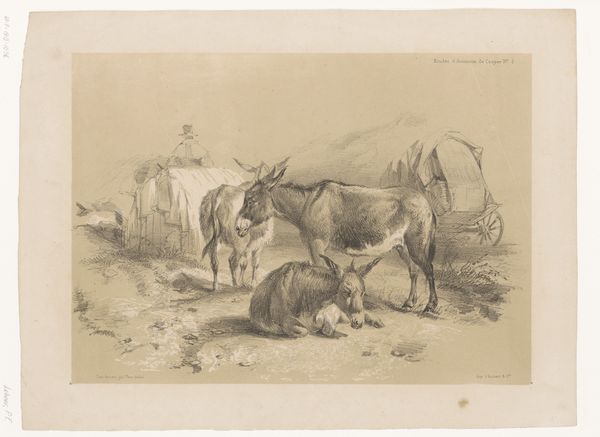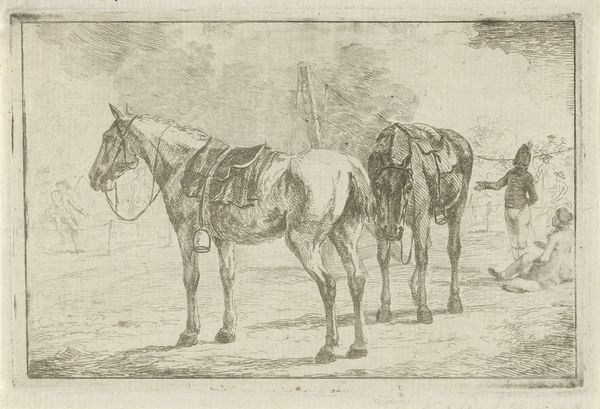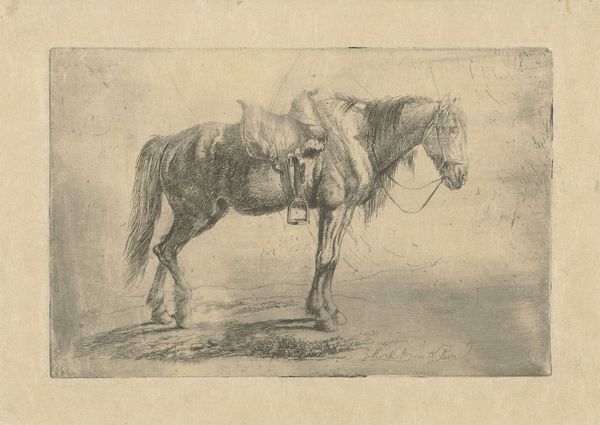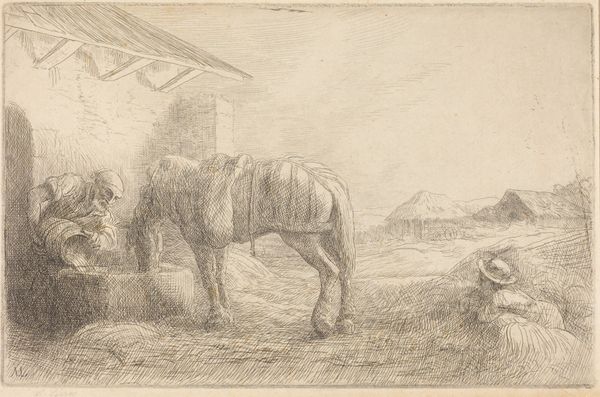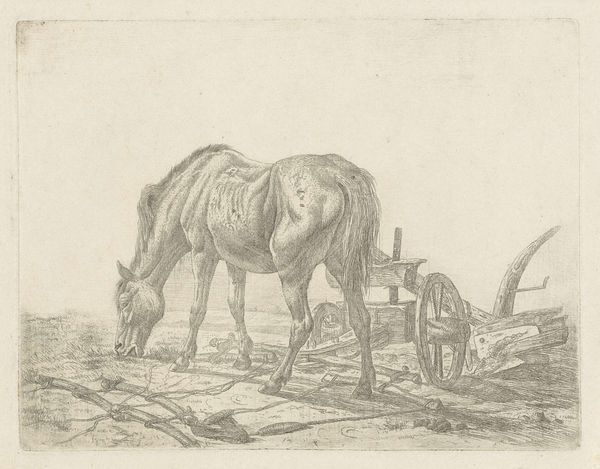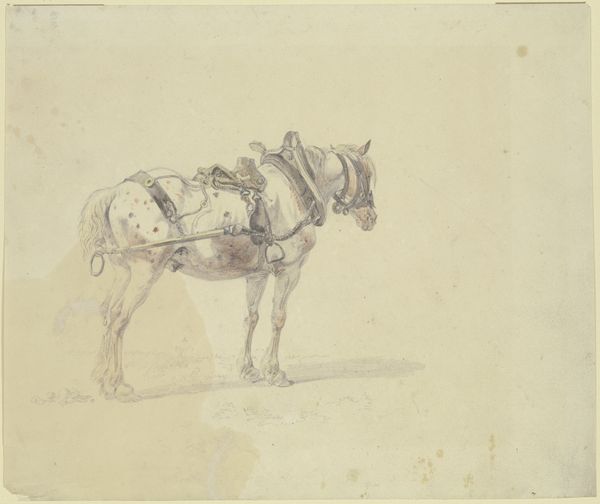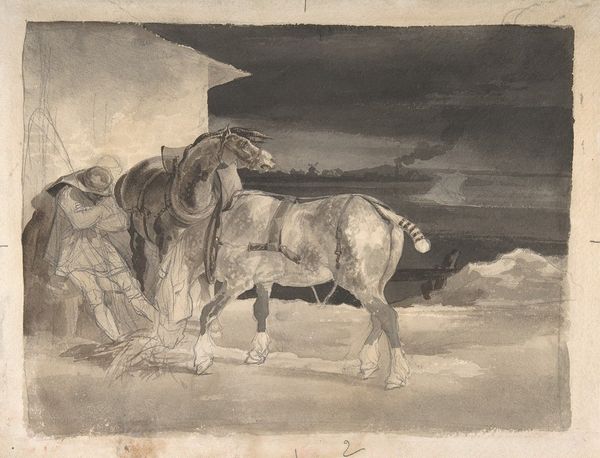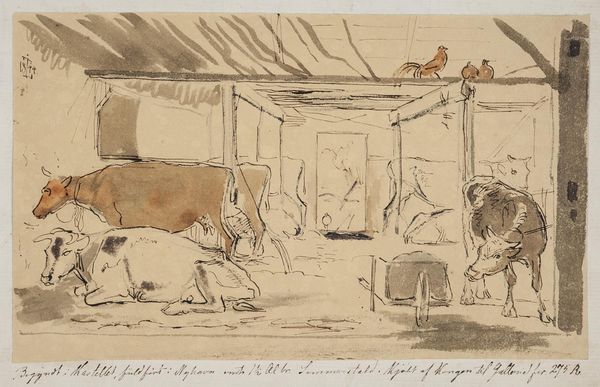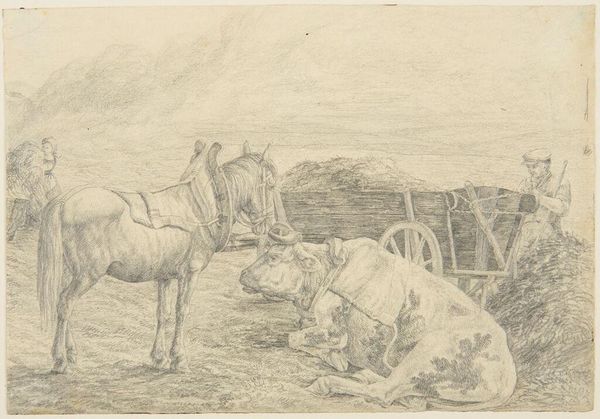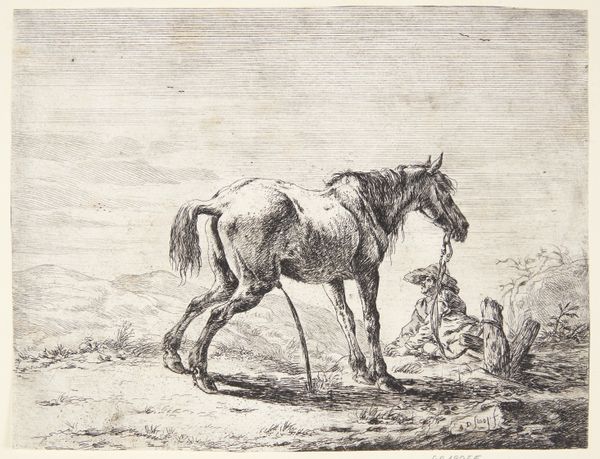
drawing, paper, pencil
#
drawing
#
pencil sketch
#
landscape
#
charcoal drawing
#
paper
#
pencil
#
watercolour illustration
#
genre-painting
#
watercolor
Dimensions: height 276 mm, width 412 mm
Copyright: Rijks Museum: Open Domain
Curator: Looking at “Donkey in Stable” created sometime between 1821 and 1891 by Guillaume Anne van der Brugghen, we see a genre painting composed of pencil and watercolour on paper. The modest materials lend a direct, unpretentious air to the composition. Editor: My immediate impression is one of quiet solitude. There’s a distinct stillness in the drawing; the donkey seems caught in a moment of resignation. Curator: Precisely. Van der Brugghen, though not among the most celebrated names, reflects a common interest of the time in portraying everyday rural life. Genre paintings, like this one, offered glimpses into worlds beyond the urban centers, celebrating the agrarian lifestyle that underpinned much of 19th-century society. Editor: Yes, but also, isn’t there a potential reading about labour and exploitation here? The donkey, clearly a working animal, is depicted in a state of what looks like exhaustion, weighed down by its saddle in this sparse, almost melancholic stable interior. Is Van der Brugghen perhaps offering a subtle commentary? Curator: That's an insightful perspective. While a straightforward reading might see it as a simple depiction of rural life, considering the social realities of the era opens the door to interpretations that critique the burdens placed on both animals and the working class. There may have been less romanticism in the pre-industrial landscape than the paintings portray, but we can appreciate that tension as well. Editor: The subdued palette also strikes me as significant. The limited use of colour seems to reinforce the austerity of the scene and highlights a particular class struggle in the area and time of production. The economic status of labourers could only allow for basic materials such as these, a statement in and of itself when displayed in the societal theatre of an exhibition. Curator: Agreed, every element of the work resonates with deeper socio-political implications, from subject choice to materiality. Understanding the time of its making reminds us about those potential subtexts as well. Editor: Definitely something to consider as we reflect on who and what art aims to depict. Curator: An invitation, then, to see more than just a donkey in a stable.
Comments
No comments
Be the first to comment and join the conversation on the ultimate creative platform.

